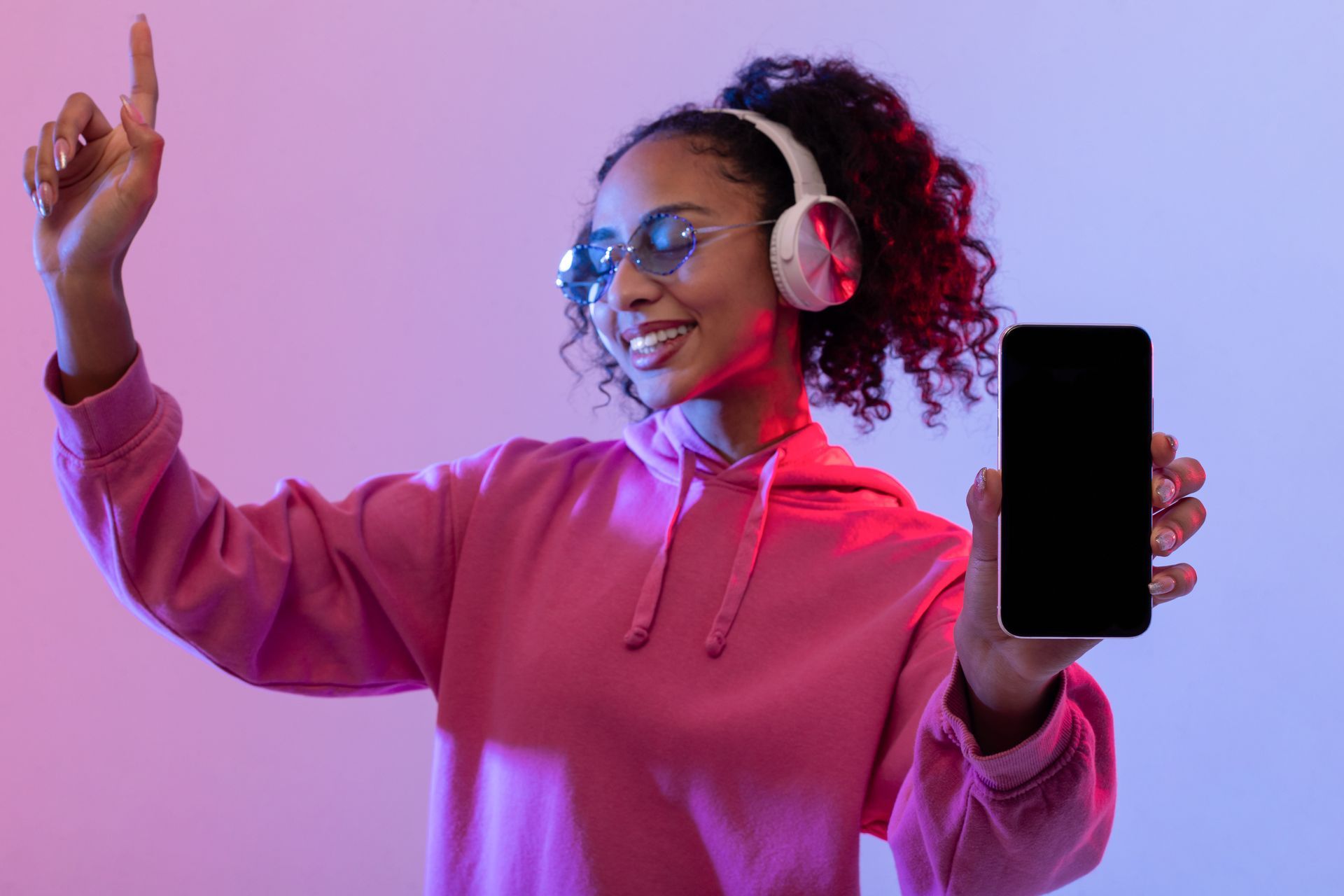8 Misconceptions about Latinos and How to use Digital Marketing to Reach them Effectively
Even if you don’t intend to stereotype, you may make generalizations about groups according to typical portrayals you’ve seen of them - including what you may have seen or heard about Latinos in the U.S. Find out what you may have been guessing wrong about Latinos, and how you can use your newfound knowledge to build successful digital marketing plans to reach them and grow your business. It’s a win-win for everyone involved.
1. Misconception: Latinos don’t have a lot of spending power.
Fact: Over the years, Latinos have become a growing labor force demographic and spending power is on the rise.
At 66.3% in 2019, Hispanics had the highest labor force participation rate of any demographic and were ahead of the overall U.S. labor force participation rate of 62.9%. Their high participation rate is due in part to the fact that Hispanic millennials comprise nearly 30% of all Hispanics - making them a more youthful group with plenty of working years left compared to other demographic groups.
Thanks to their largely millennial demographic, Hispanic consumers are also likely to be auto intenders, making them the fastest growing segment in the automotive market - contributing to 11% of overall vehicle sales in 2019.
That being said, it’s vital that your business keeps its local Hispanic audience in mind, given their upcoming rise in spending power. This is especially true if you live in a Hispanic majority market or if your area has a significant Latino population.
2. Misconception: Almost all Latinos in the U.S. are Mexican.
Fact: Latino cultural backgrounds vary greatly - especially depending on the region.
While it’s true that Mexicans comprise more than two-in-three Hispanics in the Los Angeles and Houston metro areas, this isn’t the case for Hispanics everywhere in the U.S.
In many other metro areas, other origin groups make up the largest share among Hispanics. For instance, Puerto Ricans are the largest group in Orlando, Salvadorans are the largest group in Washington, D.C., and Cubans are the largest origin group in Miami.
It’s important to address your local Latino audiences on their most visited platforms, but also being aware of the varying cultural backgrounds and distinctions within your audience will help take your multicultural marketing campaigns to the next level.
3. Misconception: It’s fine to stick with English-language campaigns when marketing to Latinos.
Fact: Many Latinos favor Spanish or are bilingual, and their preferences vary.
Language preferences are increasingly important for advertisers and businesses to effectively reach Latinos.
Google, arguably one of the most influential authorities in the digital space, has taken notice of the importance of cultural and language preferences too. Sarah Carberry, head of multicultural strategy at Google, told Search Marketing Daily , “We’re finding a need to stay connected to culture. The best way to do that is through language.” Their findings have also shown that Spanish-language commercial search queries grew 55% in 2019, compared with 2018.
There’s no doubt that language plays a huge role when addressing Latinos. However, knowing how and when to use Spanish, English, or a mix of both makes all the difference to help your business stand out from the crowd and stay culturally relevant.
4. Misconception: Latinos are traditional. They favor in-store purchases as opposed to online.
Fact: Latinos are early tech adopters and many of them frequently make purchases online.
Hispanics are extremely active internet users. Did you know that 60% of Hispanics were born or grew up in the internet age, compared to 40% of non-Hispanic Whites? This makes them a prime digital audience that you can readily reach from the comfort of their favorite websites and devices. Hispanics are also more likely to access the internet via a smartphone, making them a mobile-first audience.
When it comes to the shopping experience for bilingual Hispanics, experiences fluctuate across channels. According to Google data , about 40% of bilingual shoppers prefer to shop in stores, but purchase online, compared with 29% of non-Hispanic shoppers.
Evidently, Latinos are not as traditional as people may assume. With a largely Millennial and Gen Z population, Latinos are tech-savvy and are quick to adopt new technology. What does this mean for you? Keeping their digital patterns in mind can help your business recognize how their habits trickle down to their consumer behavior - and you can know exactly how and where to reach them.
5. Misconception: Latinos are a minority group in the U.S.
Fact: It depends on where you’re at!
Non-Hispanic white Americans account for 60% of the U.S. population , but in numerous counties, the majority of residents are Hispanic, reflecting the rapidly changing demographics within the U.S.
A total of 69 counties were majority Hispanic in 2018.The number of majority Hispanic counties doubled between 2000 and 2018, from 34 to 69. In all but four of these 69 counties, the Hispanic portion of the population grew during that period.
With Latinos becoming the majority in a growing number of counties, it doesn’t hurt to check if yours is one of them too - or on track to become one. Even if your county isn’t majority Hispanic, it’s likely that your local Hispanic population will continue to grow over time to reflect national trends. This is when it becomes more important than ever to stay ahead of the curve and dedicate part of your digital marketing plan to target Hispanic audiences.
6. Misconception: Most Latinos aren’t homeowners.
Fact: Hispanic homeownership is on the rise.
Over the past decade , Hispanics have accounted for 62.7% of net U.S. homeownership gains, growing from 6,303,000 homeowners to 7,877,000. Overall, this is a total increase of 1,574,000 Hispanic homeowners.
The upward trajectory for Hispanic homeownership is in line with projections made by the Urban Institute that Hispanics will account for more than half of all new homeowners in the next several years, and for 56% of all new homeowners by the year 2030.
Case in point, if you’re targeting homeowners or potential home buyers in your area, make sure you’re able to reach Latinos as they’re increasingly making up a larger share of U.S. homeowners.
7. Misconception: Most Spanish-speaking Latinos are immigrants.
Fact: Immigrants are a declining share of the Latino population.
You know how the story goes… most of today’s Latinos are coming to the U.S. from their native countries in search of opportunity or reconnecting with family. But actually… The number of Latinos in the U.S. who are immigrants declined to 33% in 2017, mostly due to declining migration from Latin America. However, since many U.S. Latinos are children of immigrants or descended from Latino immigrants, cultural ties still run deep and language plays an important role.
When it comes to your media plans, Latinos probably aren’t as different from you as you think. Yes, many of them speak and/or prefer Spanish - but there’s no need to see them as a completely separate group of consumers, rather, it helps to see them as a segment within the larger U.S. population.
8. Misconception: Many Latinos living in the U.S. are not long time residents or citizens.
Fact: A large portion of Latinos are U.S. citizens and/or long time residents.
Most of the current U.S. Latino population has been here since they were born or for several decades . In fact, about 79% of Latinos who live in the U.S. are U.S. citizens, which is up from 74% in 2010. Who exactly counts as a citizen? Citizens are defined as individuals who were born in the U.S. and its territories (including Puerto Rico), people born abroad to American parents, and naturalized citizens.
If they aren’t already citizens, a growing share of Latino immigrants are longtime U.S. residents. Roughly four-in-five Latino immigrants (78%) have been living in the U.S. for more than 10 years, which shows a 14% increase from 64% in 2010.
When it comes to your Hispanic digital marketing plans, there’s no need to treat Latino audiences as complete foreigners - but it is important to pay attention to the generational, regional, and language differences that make them unique.
In conclusion…
U.S. Latinos are an avid digital audience, and they’re also growing in the workforce in addition to seeing increases in spending power and homeownership in recent years.
Ultimately, the many strategic digital methods available for reaching Latinos are just as unique as their backgrounds and cultures. No one wants to be treated like a stereotype, and your Hispanic digital marketing campaigns can benefit from being distinctive and breaking this mold too. Recognizing who your audience is can only go so far, but taking the time to know the facts can make all the difference in connecting with them authentically and gaining their trust as consumers.
Want to learn more about how to effectively reach your local Hispanic audiences? Feel free to contact us or find a location near you today.













